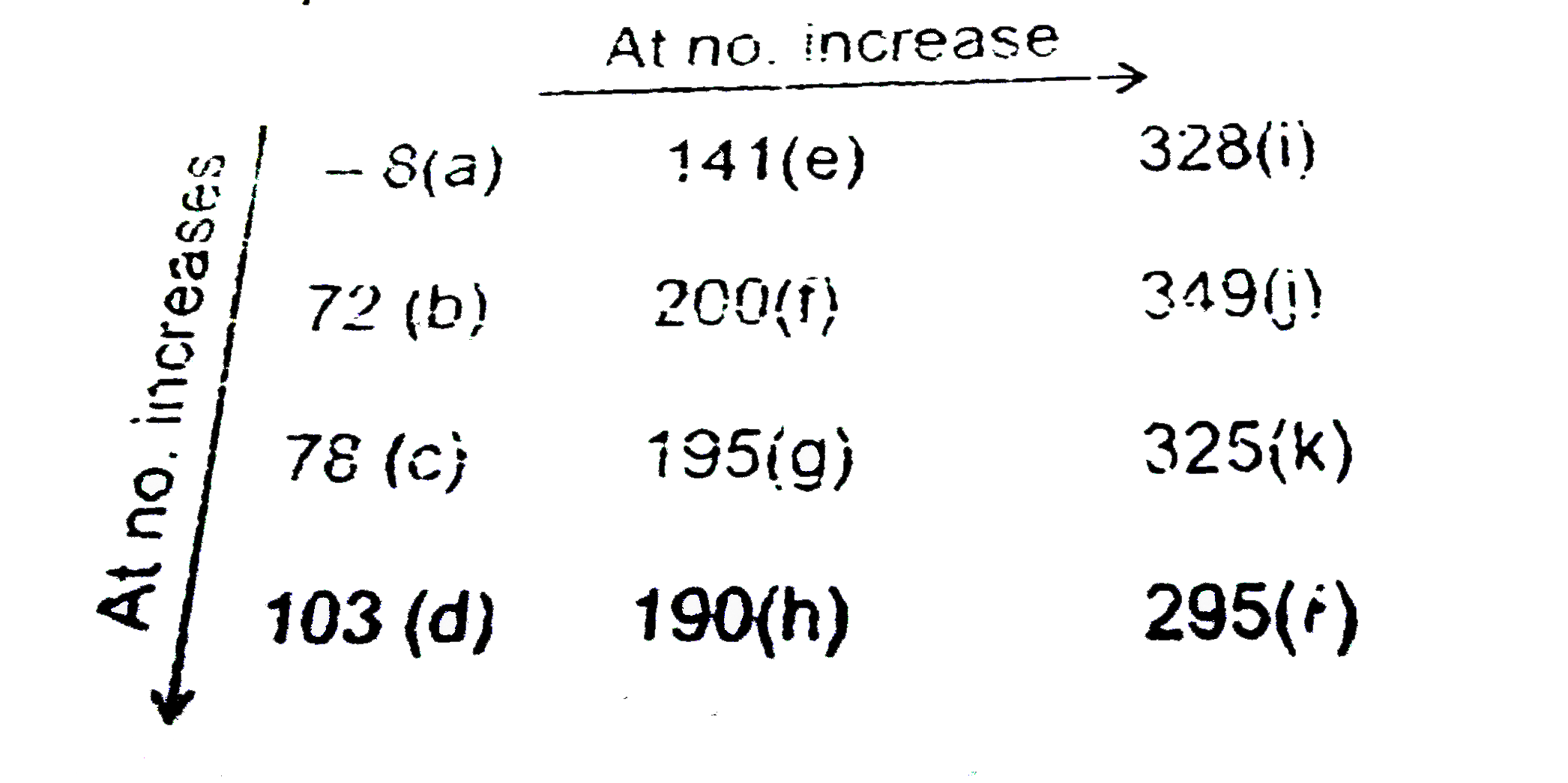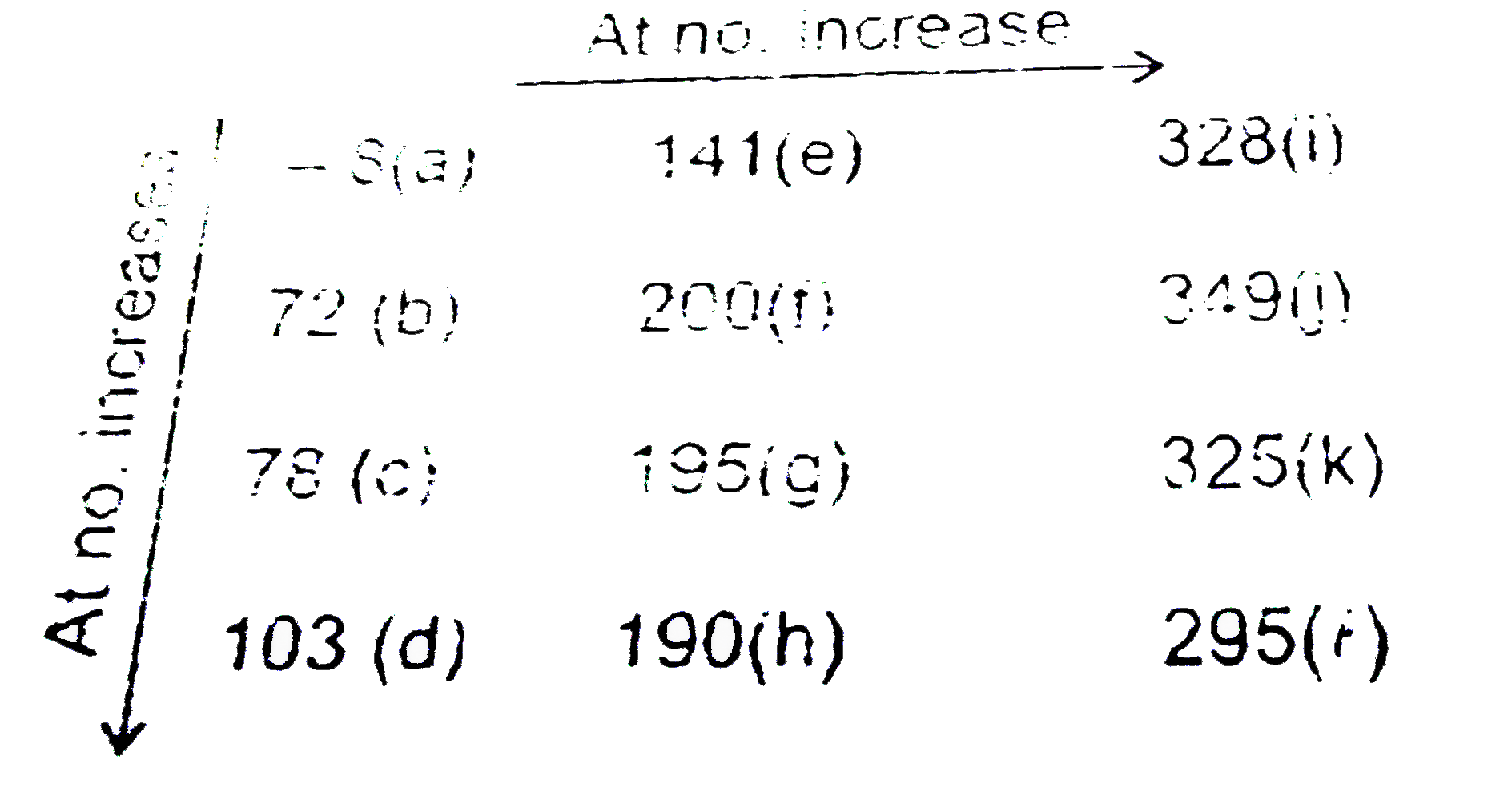Complete Solutions to Advanced Level Problems of chapter PERIODIC TABLE & PERIODICITY of Class 12 book with complete answers and questions
| Class 12 | CHEMISTRY |
| Chapter | PERIODIC TABLE & PERIODICITY |
| RESONANCE | Advanced Level Problems |
| Number Of Questions | 100 |
| Academic Year | 2023-24 |
The elements which exhibit both vertical and horizontal similarities are:
05:07View SolutionOf the following pairs, the one containing examples of metalloid elements is:
01:30View SolutionWhich of the following is the wrong statements?
01:25View SolutionAtomic number of 15, 33,51 represents the following family:
02:18View SolutionIn a given energy level, the order of penetration effect of different orbitals is
01:11View SolutionWhich of the following is correct prder of `Z_(eff)`:
02:56View SolutionIn sodium atom on `3s` electron the screening is due to:
00:34View SolutionWhich of the following elements can heve negative oxidation states.
01:47View SolutionWhat is correct order of reducing capacity.
01:09View SolutionIntert pair effect is observed in elements of which block:
01:26View SolutionWhich of the following order of radii is correct?
05:09View SolutionThe lanthanide contraction refers to:
02:27View SolutionWhich of the following statement is correct with respect to the property of elements with an increase in atomic number in the carbon family (group 14)?
05:23View SolutionWhich group of atoms have nearly same atomic radius.
02:25View SolutionThe incorrect order of radius is:
01:04View SolutionThe second ionisation enthalpies of elements are always higher than their first ionisation enthalpies because:
05:38View SolutionA large difference between the third and fourth ionization energies indicates the presence of:
01:40View SolutionThe ionization energy will be higher when the electron is removed from .........if other factors being equal.
02:23View SolutionThe atomic number of `V,Cr, Mn and Fe` are respectively `23,24,25 and 26.` Which one of these may be expected to have the highest second ionization enthalpy?
03:43View SolutionFor which of the following species `2^(nd) IE lt 1^(st) IE`
01:14View SolutionWith reference to `1^(st) IP` which are correct.
(a) `Li lt C` (b) `O lt N` (c ) `Be lt N lt Ne`02:08View SolutionValues of `1^(st)` four ionisation energies `(kJ//mol)` of an element are respectively 496, 4563, 6913, 9541 the electronic configuration of that element can be.
02:57View SolutionWhich one of the following statement is correct?
01:56View SolutionFor magnitude of eletron gain enthalpy of chalocogens and halogens, which of the following option is correct?
04:53View SolutionThe correct order of electron gain enthalpy (most endothermic first and most exothermic last) is:
02:12View Solution`N_(0)//2` atoms of X(g) are converted into `X^(+)` (g) by energy `E_(1) . N_(0)//2` atoms of X(g) are converted into `X^(-)` (g) by the energy `E_(2)` . Hence ionisation potential and electron affinity of X(g) are :
01:34View SolutionThe formation of oxide ion `O^(2-)(g)` from oxygen atom requires first an exothermic and then an endothermic step as shown below
`O(g)+e^(-) rarr O^(-)(g), DeltaH^(-) = - 141 kj mol^(-1)`
`O^(-)(g) +e^(-) rarr O^(2-) (g), DeltaH^(-) =+ 780 kj mol^(-1)`
Thus, process of formation of `O^(2-)` in gas phase is unfavourable even through `O^(2-)` is isoelectronic with neon. It is due to the fact that A) oxygen is more electronegative B) addition of electron in oxygen results in larget size of the ion C) electron repulsion outweights the stability gained by achieving noble gas configuration D) `O^(-)` ion has comparatively smaller size than oxygen atom02:44View SolutionThe prperties which are not common to both groups 1 and 17 elements in the p-periodic table are:
03:35View SolutionThe correct set of decreasing order of electronegativity is:
View SolutionWhich of the following is most electronegative in `p`-block elements
01:32View SolutionWhich set does not show correct matching ?
01:40View SolutionIn which element shielding effect is not possible ?
01:35View SolutionElements of which block in modern periodic table cannot have-ve oxidation state?
01:14View SolutionWhich of following ions do not exist togther in aqueous solution:
01:03View SolutionSelect correct statement (s):
01:56View SolutionWhich of the following is the correct order of ionisation enthalpy ?
02:30View SolutionWhich is true statement(s)?
02:26View SolutionWhich of the following statement is wrong for the d-block elements?
02:52View SolutionPoor shielding of nuclear charge by `d` or `f`-orbital electrons is responsible for which of the following facts?
02:43View SolutionWhich of the following element(s) have only one non-zero oxidation state.
02:00View SolutionWhich of the following is/are true order (s):
View SolutionSelect the endothermic step(s):
02:36View SolutionWhich of the following has/have not unit?
01:09View SolutionAtomic number of `Ag` is 47. In the same group the atomic numbers of elements placed and below `Ag` in long form of periodic table will be `x` and `y` respectively. Given the value fo `(x+y)//12`.
View SolutionWhat is the sum of oxidation states of hydrogen in `CaH_(2) &CH_(4)`.
01:16View SolutionMost stable oxidation state of Thallium is `+n`. What is the value of `n`.
View SolutionTotal number of elements which have more ionization energy as compare to their next higher atomic number elements. `Li, be, C, N, O, F, Ne`
05:30View SolutionFor the gaseous reaction `K + F rarr K^(+) +F^(-), Deltah` was calculated to be `18.4` kcal/mol under conditions where the cations and anions were preverted from combining with each other. The ionisation enthalpy of `K` is 4.3 eV/atom. What is the electron gain enthalpy of F (in eV)? If your answer is `x` report it as `-2x`.
03:20View SolutionHow many elements are more electropositive than `CI`.
`B, N, O, C, S, P, At, H, Li`03:23View Solution`EA_(1)` value of some group of p-Block elements ae given:

`a, b, c…………l` are non radioactive p-Block elements:
Select the correct order of atomic radius:View Solution`EA_(1)` value of some group of p-Block elements ae given:

`a, b, c…………l` are non radioactive p-Block elements:
Select the correct order of `2^(nd)` ionisation energy:View Solution`EA_(1)` value of some group of p-Block elements ae given:

`a, b, c…………l` are non radioactive p-Block elements:
Choose correct match :View SolutionThe element whose electronic configuration is `1s^(2), 2s^(2)2p^(6), 3s^(2)` is a`//`an
01:01View SolutionOxygen shows `+2` oxidation state is
01:43View SolutionWhich Group IIIA elements is expected to have physical and chemical properties least similar to other members of that group?
01:28View SolutionWhich of the followig ions will show highest magnetic moment `(Z` values for nautral atoms are as follows: `N = 7, Cr = 24, Fe = 26 & Co = 27)`
03:28View SolutionThe oxidation number of `Cr` in `K_(2)Cr_(2)O_(7)` is
01:55View SolutionWhich of the following is the smallest in size?
02:12View SolutionOxidation Number of `Mn` in `[MnO_(4)]^(-)` is:
01:27View SolutionThe reduction potentials of `Zn, Cu, Fe` and `Ag` are in the increasing order:
View SolutionThe formation of anion from a neutral atom `X` is favoured by:
02:28View SolutionAn isotone of `._(32)^(76)Ge` is-
(a) `._(32)^(77)Ge`
(b)`._(33)^(77)As`
(c)`._(34)^(77)Se`
(d)`._(34)^(78)Se`02:01View SolutionWhich element of `3rd` row has biggest atomic size?
02:35View SolutionWhich group of periodic table have large negative energy of activation ?
01:15View SolutionThe species which has its fifth ionization potential equal to 340 V is :
01:50View SolutionThe atom of an element `X` contains 27 electron `X` is expected to be
01:38View SolutionThe group in the periodic table that contains the elements in all the different physical states at room temperature is
01:52View SolutionThe ion having a noble gas electronic configuration is
02:49View SolutionElement with `Z = 83` belongs to which block?
01:29View SolutionIntert pair effect plays an important role in the case of
01:54View SolutionWhich of the following has the highest electron affinity?
01:39View SolutionThe element having electronegativity nex of that of fluorine is
02:17View SolutionThe group in the long from of periodic table having three elements togther is
02:15View SolutionAtom with the largest electron affinity is
02:32View SolutionThe lithium ion `(Li^(+))` and hydride ion `(H^(-))` are isoelectronic ions. Which statements about these system is true?
04:38View SolutionWhich of the following sequence of elements is arranged in the order of increasing atomic radii?
03:20View SolutionThe number of unpaired electrons in the scandium atom is
01:14View SolutionThe three quantum numbers `n,l,m` corresponding to the valence electrn in rubidium `(Z = 37)` are :
01:45View SolutionWhich of the following pairs represents isoelectronic ions?
03:10View SolutionWhich of the following statements concerning transition elements is false?
02:18View SolutionElement having `(4,0,0+1//2)` as a set of four quantum numbers for its valence electron is-
02:52View SolutionEuropium forms stable `Eu^(2+)` ions because
02:18View SolutionAssuming a Lewis structure for `SO_(2)` in which all the atoms obey the octet rule, the formal charge on `S` is:
01:16View SolutionWhich of these ions is expected to be colored in aqeous solution?
[I] `Fe^(3+)` [II] `Zn^(2+)` [III] `AI^(3+)` [IV] `Sc^(3+)`03:37View SolutionHow many unpaired electrons ae in a `Fe^(2+)` ion in the ground state?
01:07View SolutionWhen the atoms `Li,Be,B` and `Na` are arranged in order of increasing atomic radius, what is the correct order?
01:03View SolutionThe noble gas was first time discovered by
00:34View SolutionThe correct order of increasing first ionization energy is
04:57View SolutionThe group that has the species correctly listed in the order of decreasing radius is:
03:47View SolutionThe number of valence electrons in an atom with the configuration `1s^(2)2s^(2)2p^(6)3s^(2)3p^(2)` is:
01:16View SolutionThe compound in which Mn has oxidation state of `+3` is
02:46View SolutionThe most abundant element found in the earth's crust is:-
01:30View SolutionEinstenium has 11 electrons in the `4f` subshell. The number of unpaired electrons in the subshell is:
01:08View SolutionLanthanoid contraction is caused due to:
01:58View SolutionThe outermost electronic configuration of the most electronegative element is
00:45View SolutionThe first ionisation potential of `Na,Mg,Al` and `Si` are in the order
02:49View SolutionThe first four ionization energies of an element are `191, 578, 872`, and `5962 "kca"l`. The number of valence electrons in the element is.
01:24View SolutionThe number of unpaired electron in `Ni^(2+)` is
01:08View SolutionEuropium `(Eu)` and Terbium `(Tb)` attain stable `4f^(7)` configuration by exhibiting oxidation states of
01:37View Solution`4s` orbitals has less energy than `3d` orbital
02:09View Solution
Advanced Level Problems questions and complete solutions for chapter PERIODIC TABLE & PERIODICITY of PHYSICAL, INORGANIC, AND ORGANIC CHEMISTRY of Class 12
